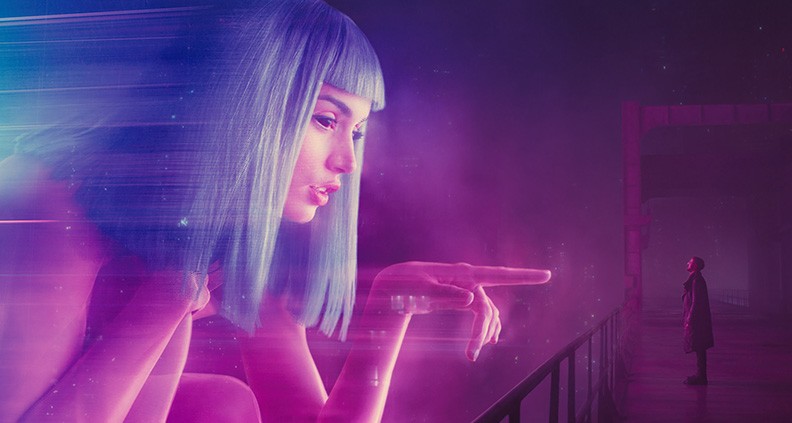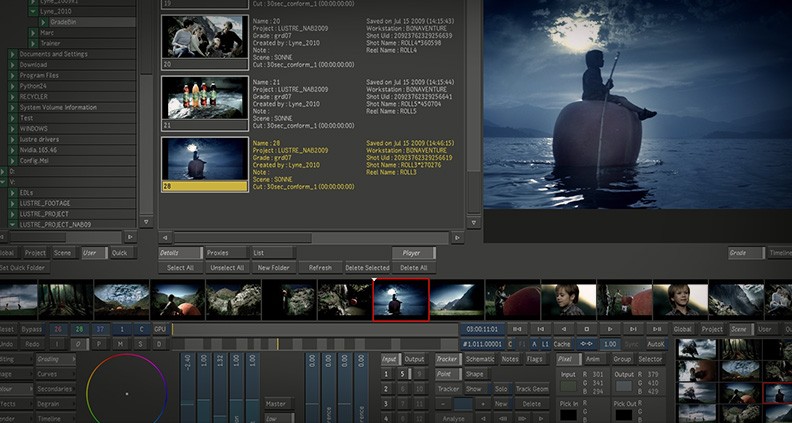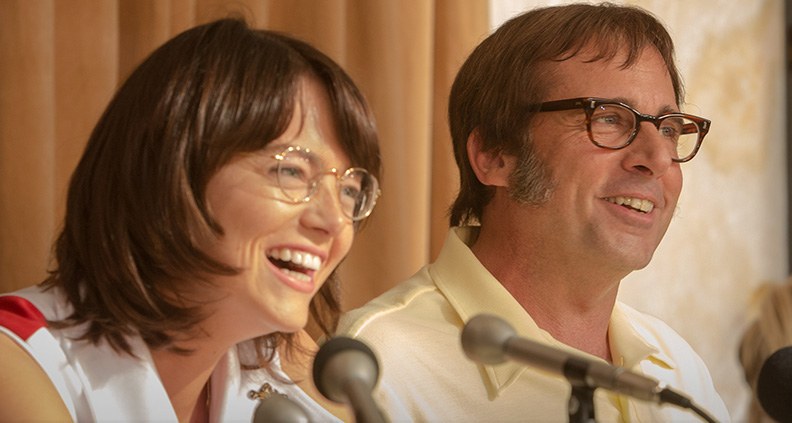From the Archives: Mitch Paulson and the Art of Color Correction, Part One
NOTE: The below piece originally ran in 2017. We’re re-posting it here with minor edits to the original text. Special thanks to author Su Fang Tham and subject Mitch Paulson.
***
For our inaugural edition of Detail Oriented, we were honored to talk to Mitch Paulson, Supervising Digital Colorist of the Film Independent Spirit Award nominated historical drama Loving. Paulson’s credits—of the nearly 180 titles listed on IMDB—include such big budget fare as Rogue One and Skyfall, as well as indie darlings like Selma and Straight Outta Compton.
Often credited as the Digital Intermediate process, or “DI” (going back to the days when movies always started out and ended up in the analog medium of celluloid), a colorist adjusts and transforms footage into the final shot you see on the big screen.
Through color grading-and-correction, colorists can paint a character’s nails, make their tears more distinct or add frostbite to a dead body. They can change a character’s hair color or add cloud cover to a previously sun-drenched shot.
In addition to fixing continuity issues and discrepancies from reshoots, color grading can also serve as a cost-effective alternative to certain kinds of VFX. In some cases, the colorist will even re-light an entire scene digitally, in post-production.
We met up with Paulson at the digital lab EFILM in Hollywood, where he started in 2005. As we spoke, he demonstrated the principals of color correction with Autodesk Lustre—the real-time color correction software suite that is a main tool of the trade. Here’s the conversation:
MITCH PAULSON

How did you get started in this career?
Paulson: Originally, my goal was to do 3D animation. That’s why I moved to LA, to go to school for animation. I started to learn about compositing and other aspects of filmmaking that I wasn’t exposed to while going to art school in Minnesota, where I’m from. My first job was compositing for movie trailers. One day my boss bought a color corrector and said, “Try it out and see what you think.” And I ended up loving it. That’s how I got started with color grading.
I love hearing stories of how it only takes one thing to pivot you into a totally different career direction.
Paulson: Looking at it now, I like being a colorist because I have a much broader impact on the whole movie. I color every single shot, whereas as an animator, I might only work on a handful of shots. The other thing I enjoy about it is that I’m the very last step. Basically what we do in the color grading theater is what everyone is going to see and there are no more changes to it after that.
But doesn’t that mean you’re also always crunched for time, because you’re the last step in the post-production process?
Paulson: Absolutely. I’m in crunch week constantly. Everyone else goes on vacation after the movie is done. I go onto the next movie. I always have to remind my clients of that.
Could you explain what “DI” stands for?
Paulson: It stands for “Digital Intermediate,” which is no longer accurate for the process we do now. The “intermediate” term goes back to the time when you would scan the film, digitize it, color it and then go back to film. But we do very little with film nowadays, so there isn’t an intermediate step. 95 percent of the movies I do are captured on digital cameras, colored digitally and then put back out on DCP, which stands for digital cinema package.

What’s the difference between “color grading” and “color timing”?
Paulson: “Color timing” comes from the film lab days—the timer would sit there with when they were printing the negative and turning it into a positive. The light being pushed through the negative was made up of the three primary colors – red, green and blue – and the timer would affect the overall brightness and darkness and color of the shot based on the strength of each of those lights. When we use digital technology, all that goes out the window. “Color grading” refers to digitally brightening or darkening a shot, or changing the contrast or altering the hue. You have much more control over the look of the image when you’re working digitally.
Do filmmakers typically wait until they have the final cut before turning it over to you?
Paulson: Usually, they don’t turn over the cut for color grading until at least 90 percent of the shots are locked down, because for every change they make, we have to follow up with changes on our end, and that could rack up a huge bill. Normally, I won’t get the visual effects scenes [at first] and they’re constantly being dropped in when I’m working on a film. The visual effects may change hundreds of times after I start working.
Do you only start color correction when you know it’s the final version of a shot?
Paulson: We have to color it even when it’s not the final version. If I waited for every shot to be final, I’d have to color the entire movie in two days. I always tell filmmakers to just give me something to look at, so it’s not just a slide that says “VFX” on it. But every time they change it, I have to go back and check it.

On average, how much time do you budget for a specific project?
Paulson: Every movie is different. If it’s a romantic comedy with people talking back and forth so there aren’t as many shots or scene changes, it’s very straightforward. That could be 80 hours, or two weeks, usually. But when you start getting into a VFX-heavy movie, I could be on it for hundreds of hours. It really depends.
How do you pick your projects?
Paulson: I actually like to diversify the kinds of movies I do. I like that I could work on a Star Wars movie and then go to a movie like Loving, where it just couldn’t be any more different. It’s nice to go from something more demanding and difficult to something more straightforward.
The ones that you refer to as more “straightforward,” can you touch on that?
Paulson: Fewer cuts [or shots], fewer visual effects, people taking back and forth. One reel of a movie may have 200 shots, which I can move through fairly quickly coloring-wise. The opposite end of that is a high action movie like Resident Evil, which had 1,000 shots in one reel. When I have 200 shots, I might spend a couple of minutes on each shot. But on something like Resident Evil, it’s going to have five times as many shots but each shot will be at a different angle or faster, so there’s more I’ve got to match and make work in a scene.
Before we move into the specifics of Loving, how far along into the film are you brought into the project?
Paulson: Every movie is different. I have some DP’s I work with constantly. For example Adam [Stone] on Loving—I already know what his next movie is going to be, so we’ll talk about it and get ideas. On other projects, I’ll get a movie two weeks before the DI work has to start and I’ve never worked with any of people on the film.
In Part Two coming Saturday, we’ll delve deeper into Paulson’s work on director Jeff Nichols’ acclaimed 2016 drama Loving. Stay tuned!
To learn more about the The EFILM | Company 3 Feature Film Grant—which provides $50,000 in color correction and digital intermediate services for Film Independent Fellows, alumni of the LA Film Festival and Film Independent Spirit Award Nominees—just click here.
Film Independent promotes unique independent voices by helping filmmakers create and advance new work. To become a Member of Film Independent, just click here. To support us with a donation, click here.
